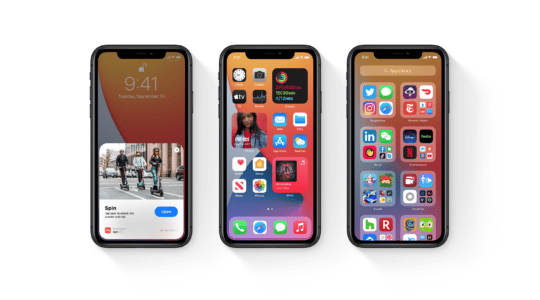Imagine you could give someone a direct URL link to a photo on Instagram or a room on AirBnB’s iPhone app. Imagine how much higher your conversion rate would be if your ad units on a mobile website opened up to a specific page in an app with one tap, instead of the app’s landing or signup page. This streamlined experience is not just the elimination of a few clicks. It’s the difference between a viable in-app purchase strategy and a siloed ghost town app, and it’s ushering in the Golden Age of mobile marketing.
First, what are Deeplinks?
Mobile deeplinks are links to sub-pages of a mobile app. Just as you can send a friend a link to your Facebook profile on the web, deeplinking allows you to send a link to your Instagram profile or your Pinterest board, within the Instagram and Pinterest mobile apps. On a technical level, this is done by registering a custom url scheme in your iOS or Android app, which tells the mobile operating system to leave the browser window, open your app, and call a handler method that you provide when the link is clicked. This handler method could open a product page, a user profile page, a camera dialogue, or any other action you’d like the user to perform. Bam!
The Past: Copying desktop marketing strategies onto Mobile devices
If that doesn’t have you chomping at the bit yet, consider an internet where you couldn’t send a user a link to your hand-woven scarf on Etsy. All you could do was drop them on the Etsy homepage and tell them to search for “red scarfs” in the search bar. Good luck, indeed. That’s what the first generation of mobile marketing has been about–taking familiar concepts from desktop user acquisition and translating them to mobile. App install lists have replaced email lists as the prized distribution resource, and App Store Optimization has largely mimicked the black box tactics of SEO, among other similarities.
Unfortunately, the metaphor stops there due to key differences between mobile and web development processes. Mobile apps are developed in terms of screens and states, not subdomains and pages. A mobile user cannot navigate seamlessly between an article page on the New York Times app and a product page on the Gilt app, meaning the way developers have built apps has been largely unlinkable until now.
The Future of Mobile Marketing
The ability to open an app from another app and perform specific actions has actually been possible in iOS and Android for a long time. For instance, when clicking on a map from your phone’s web browser, Google Maps has always prompted users to “Open [the map] in App.” But until recently, deeplinks and custom url schemes have lacked their killer use case. Now, with more companies relying heavily or solely on their mobile apps to sell products, mobile advertisers are scrambling to deeplink-enable their mobile apps with products such as URX’s Turnpike, Sparq and Deeplink.me.
The sheer versatility of deeplinks opens mobile apps to every channel that marketers use to reach their app audience:
- SMS
- Push Notifications
- Social Media
- Mobile Web
- Retargeting Ads
But the popularization of deeplinks and url schemes also has the potential to change the way apps interact with each other beyond advertising. In fact, non ad-related apps have many uses for deeplinking, which could drive free traffic to your app. Instagram could deeplink into FaceTune to allow users to retouch their photos before posting them. Sosh could deeplink into the OpenTable app to book reservations based on your friends’ availability. And Mint could remind you to buy groceries on InstaCart if you haven’t gone to the grocery store in a while. Similar to the way REST API’s work for web apps, this fluidity opens the doors to new cross-app campaigns and affiliate partnerships.
Before long, deeplinking will become ubiquitous. Apps linking to and from each other will be commonplace, and mobile browsers directing users to richer in-app experiences will be the default. That said, now is a great time to deeplink-enable your app. It’s simple to implement, it’s lightweight, and it can vastly improve your users’ experience.
Author
Becky is the Senior Content Marketing Manager at TUNE. Before TUNE, she handled content strategy and marketing communications at several tech startups in the Bay Area. Becky received her bachelor's degree in English from Wake Forest University. After a decade in San Francisco and Seattle, she has returned home to Charleston, SC, where you can find her strolling through Hampton Park with her pup and enjoying the simple things in life.




Or maybe, just maybe, fix it at the source by not closing your business in a walled garden app, and go open HTML?
#justsaying
Hi Kurren,
Mobile web apps would certainly be a lower-level solution, but we think it has its costs as well. Beyond the popular debate about whether/when HTML5 apps will animate and handle as smoothly as native apps, native apps also provide the benefit of storing user payment data more efficiently and more securely than mobile web apps. This is particularly crucial to ecommerce app developers, whose objective is to bring users back into an app and clicking “buy” in as few steps as possible. Until HTML5 apps can address both of these concerns definitively, it looks like native will be the platform of choice in the near-mid term future.
Thanks for your interest in the article! Are you building an app that might use deeplinking?